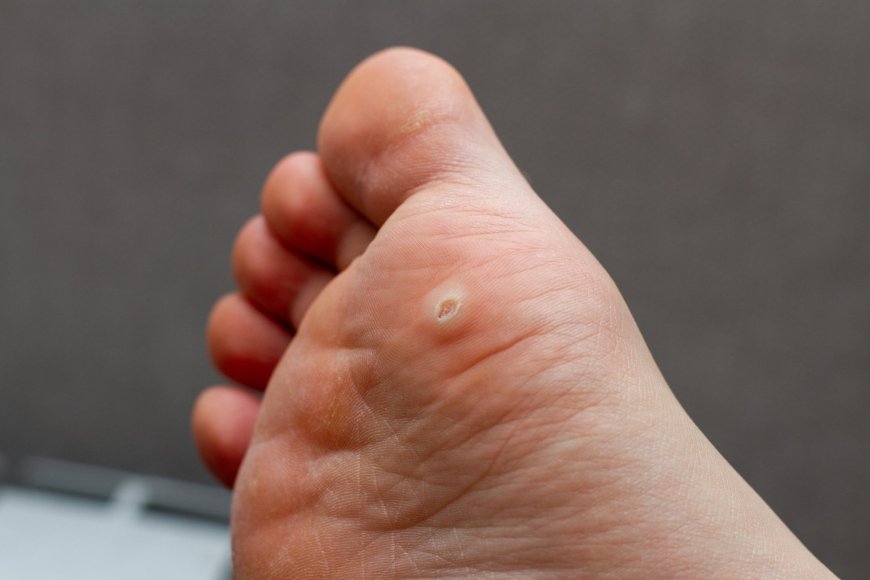Plantar Warts

Introduction:
Hey kids! Today, we're going to talk about something interesting and a little gross – Plantar Warts! These are small, bumpy, and sometimes painful growths that can appear on the soles of your feet. Don't worry; they may seem scary, but we'll break them down into simple terms and learn all about them.
Signs and Symptoms:
Plantar Warts look like small, rough bumps on your feet that might have tiny black dots in the center. They can be found on the heels, balls of your feet, or even under your toes. Sometimes, they might hurt when you walk, especially if they're squeezed or pressed.
What Is Plantar Warts?
Plantar warts are caused by a virus called the Human Papillomavirus (HPV). This virus sneaks into your skin through tiny cuts or scratches, mostly when you walk barefoot in damp places like public pools or locker rooms.
How Is Plantar Warts Classified?
There are different types of warts, and plantar warts are one of them. Plantar warts grow on the soles of your feet, while others might appear on your hands or other parts of your body.
Causes and Triggers:
As we mentioned earlier, walking barefoot in wet and public places increases the risk of getting plantar warts. The HPV virus loves damp environments and can enter your skin easily when it's soft and wet.
Risk Factors with Examples:
Certain factors can make some people more likely to get plantar warts. Here are some examples:
-
Age: Kids and teenagers are more prone to getting plantar warts because their immune systems are still developing.
-
Weakened Immune System: People with weak immune systems, like those who have certain illnesses, are at higher risk.
-
Walking Barefoot: If you love going barefoot in public areas, you might want to be extra careful!
Types of Plantar Warts:
-
Single Wart: One lonely wart that might be painful but easily treatable.
-
Mosaic Warts: A bunch of warts close together, forming a cluster.
-
Periungual Warts: These warts grow under or around your toenails or fingernails and can be quite painful.
Diagnostic Tests and Treatments:
-
Physical Examination: The doctor will look at your feet and might gently scrape the wart's surface to see if it's a plantar wart.
-
Acetic Acid Test: The doctor may apply a vinegar-like solution to the wart. If it turns white, it's likely a plantar wart.
-
Cryotherapy: The doctor might freeze the wart using liquid nitrogen, making it fall off after a few treatments.
-
Salicylic Acid: You can use special medicated patches or solutions containing salicylic acid to dissolve the wart gradually.
Complications of Plantar Warts:
If left untreated, plantar warts can grow bigger and become more painful, making it difficult to walk and play comfortably.
Prevention Techniques:
To prevent plantar warts, follow these tips:
-
Always wear flip-flops or water shoes in public wet areas.
-
Keep your feet clean and dry.
-
Avoid picking or scratching warts.
-
Don't share towels or socks with others.
Now you know all about plantar warts! If you ever find any strange bumps on your feet, don't be scared to tell your parents or visit a doctor. With proper care and treatment, you can get rid of these sneaky foot invaders and keep your feet happy and healthy!
What's Your Reaction?
 Like
0
Like
0
 Dislike
0
Dislike
0
 Love
0
Love
0
 Funny
0
Funny
0
 Angry
0
Angry
0
 Sad
0
Sad
0
 Wow
0
Wow
0








































































